On the power of technologic icebreakers, a UX case study on how adults and teens could write…
On the power of technologic icebreakers, a UX case study on how adults and teens could write stories together with hashtags.


Designing for families
For my first project as a student in UX design, I was asked to design an application that would help parents follow up on their children’s social and emotional learning as well as academic progression. Effective to Great, startup working on providing K-12 families with social and emotional learning tools was the client that articulated the mission: I had two weeks to either come up with a product that would serve 3–5 graders parents to support their children or design a standalone product that would tackle similar challenges. I eventually picked the latter since the reservoir of users I had recruited for my research appeared to be parents of teens.
User Research
“Questioning is the ability to organize our thinking around what we don’t know” -The right question institute-
After having brainstormed on the initial hypothesis (adults need a tool to follow their children’s social and emotional learning as well as school progression) and what I would need to ask to understand users needs, I built my questionnaire. I interviewed a dozen adults, asking questions about their families communication style and how they would describe the exchanges.
Aside from demographics, I enquired about when and how people communicate with each other, how they assessed their knowledge of their children’s school life; what they thought they were entitled to know as parents, family rituals, skills they wanted to learn or to help their children to learn, etc. I also tried to understand better their use of technology and the role of these tools when it comes to communicating with their children. Among other things, I learned that for them, face to face interactions are the best, but that it is not all the time possible, especially in the context of expatriation; and that messaging system and video call can come handy to compensate. Quite rapidly, I started to notice a pattern throughout almost every interview I conducted: the difficulty to find the adequate timing to connect and share.
Affinity Mapping

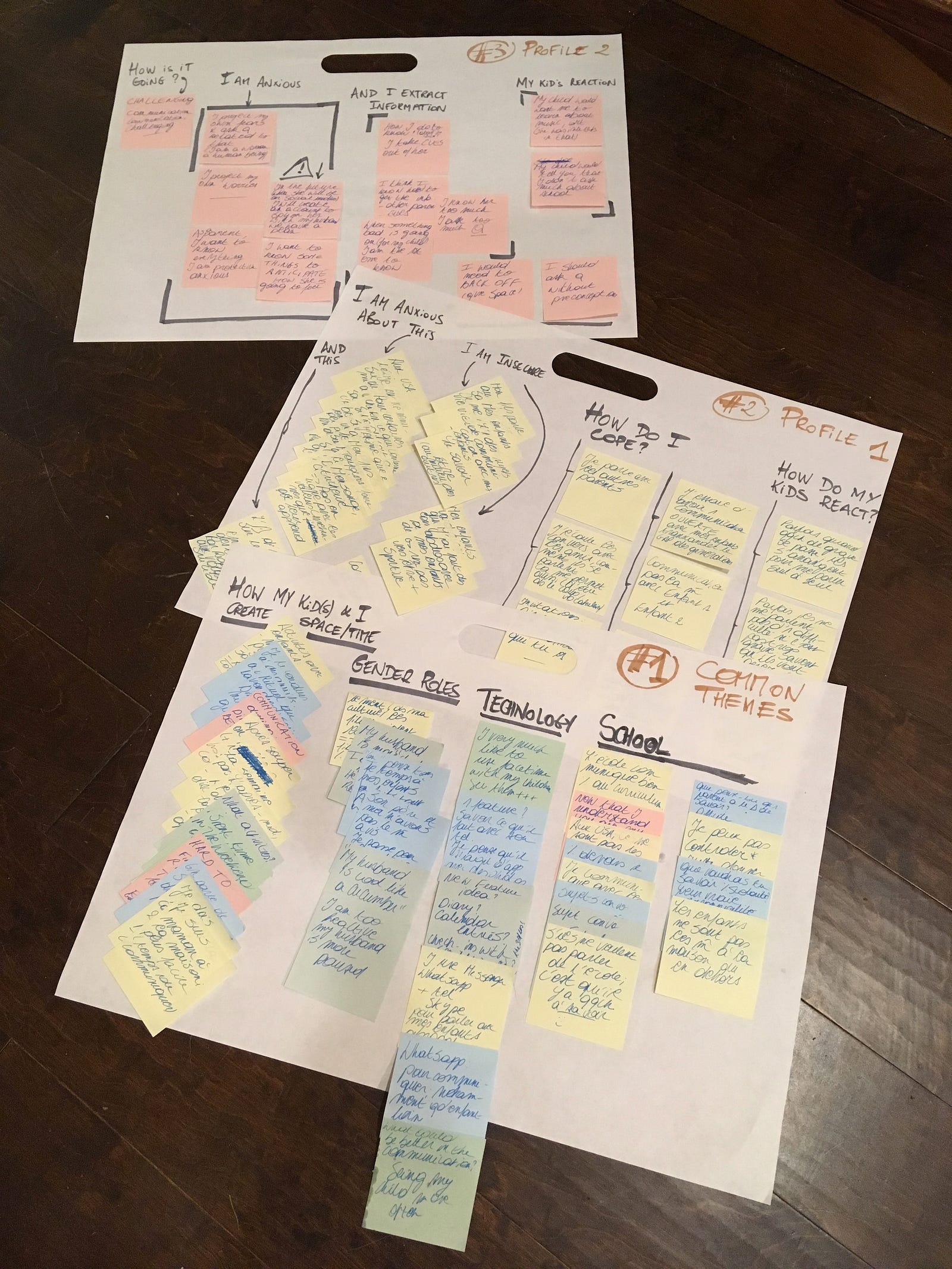
To synthesize my findings, I chose to use an affinity mapping. I asked someone else to build the map for me since I already had my focus on the “timing issue”. I was hoping to minimize biases and to either find a new angle or to get the confirmation of the trend I had seen. I facilitated the affinity mapping activity and asked my partner to comment on what he saw based on his classification of the post-its I had given him. Trends and pattern in what people say… This activity confirmed what I had found: a key factor that comes in the way of communication between adults and teens is the timing of the interactions along with how avoiding to be caught in the heat of the moment. Another important discovery was how people have the ability to create communication spaces to cope with the different communication style of the people they live with.
… and in what people did not say
Affinity mapping also came along as a crucial tool to observe what people were not explicitly expressing but what happen to be present each time across the interviews. Indeed, what mainly stood out from that activity was that people I interviewed expressed ideas that reflected their fears and anxieties for their children and their struggle on how to deal with that without projecting those fears or ending up controlling everything in their children’s life. In other words, there was a tension existing between making sure children were ok (and therefore having enough information to assess it); and the wish that they could grow independent, empowered by a feeling of ownership and finding their own ways. PersonasAffinity mapping also revealed itself as a powerful tool when it came to visualize personas and understand who I was designing for. A few words about the people I interviewed in terms of demographics: the majority of them were from overseas, members of Washington DC’s international community. In total 4 continents were represented, people from a total of 9 countries were interviewed. Children of those adults are attending school in 3 countries, although mainly in the United States. Based on the personas I could extract from my findings I settled to design for 13 years old and older teens as well as adults in the context of families.
Evaluating the initial hypothesis to get my problem statement
From the initial hypothesis that adults need tools to communicate with their children in order to follow up on their progression, to the importance of timing and face to face interactions, I ended up refining my scope of intervention and choosing to work with what was not said but overwhelmingly present: the everyday anxiety that initiate communication but then compromise it. A lot of adults that I interviewed evaluated the communication with their teens as difficult, some even talked about a generational gap they were constantly trying to bridge and most of them would welcome resources to do so.
Reflecting on my first UX work and assessing what was missing in my research, I see two paths that could be further explored. Aside from the need for a deeper market research, I would consider teens interviews. I did not interview teens. To try to get a sense of what their experience was I asked their parents to guess how they would answer some of my questions. I also asked adults to go back in time and share how they experienced parents/teens relationship when they were younger. To get more material to work with I extracted insights from my own experience as a coach for teens what lead me to be exposed to their ideas and ways to go about communicating with their parents.
With all that in mind, my problem statement is: Adults and teens want to find ways to communicate that will help them go further than fears and everyday anxiety. My research showed that those obstacles initiated interactions but also damaged the ability to connect and share.

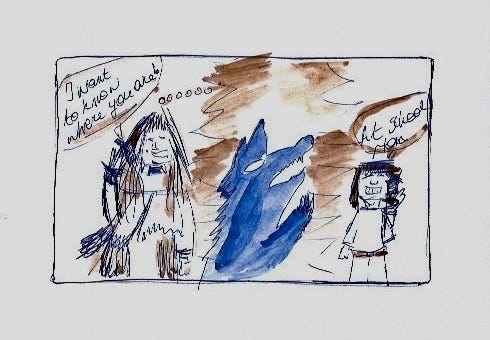
Sketching my first idea

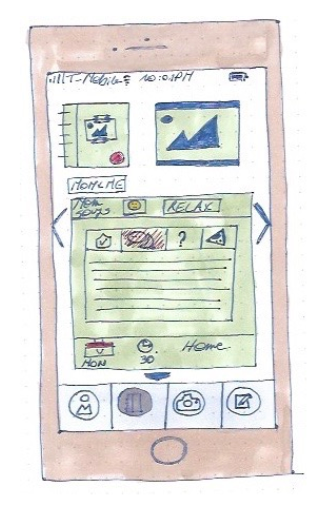
Thinking about what people had told me, I came up with the first draft of an idea and decided to develop it into a paper prototype to put it out there and see how people would interact with it. Before doing so, I came up with the first version of a user flow as to how I was picturing potential users browsing through the app. Initially, my app was supposed to be a shared diary and scheduler for teens and their parents so that they could write down emotions and thoughts along with scheduling time to meet face to face. The tool was meant to support them to make a decision on how and when to interact while giving space to each other. During a round of critique and after debriefing with UX professionals, several elements came out that would lead me to modify my product. For one thing, the homepage of the app (that was supposed to display the portions of diaries users would share with each other, the notifications,… ) was very busy and potentially not adapted for the use of smartphones. This was already quite problematic since the command was designing an app. And then, one could fairly doubt that teens would want to share full diaries entries with their parents given how personal journaling can get. In other words, if users struggled to communicate on a daily basis, there was no way they would journal together especially without some kind of intervention to help them establish contact and work on connectedness. Burying my first idea I had been warned as of how designers can easily fall in love with their own ideas what will prevent them from delivering products that make sense for their users and clients. Even though I was quite worried to have to bounce back so close from the deadline and without a comfortable time buffer to polish my work, a part of me was grateful for the opportunity to distance myself from something that was so obviously not convenient to use and that had made feel unsatisfied from start.
From there, I went back to my feedback notes and could extract two clear critique tendencies. What I was looking for was -a less busy interface along with -a way for adults and teens to connect and start a dialogue together, some kind of icebreaker.
For my second idea, I got inspired by my volunteer job for a tech non-profit that provides mental health coaching for teens. In the internal communication with the team members, hashtags were used to tag and regroup content in order to track patterns and go back to it later on if need be.
I decided to focus on the use of hashtags as a tool to facilitate communication and also to allow for tracking progress, patterns, and stories. I incorporated that feature in place of diaries. At the end of the day, hashtags are like diaries, they help to express ideas, record thoughts but with a modern twist and an aim for simplicity.
Testing as the transition from the Designer’s mind to the world

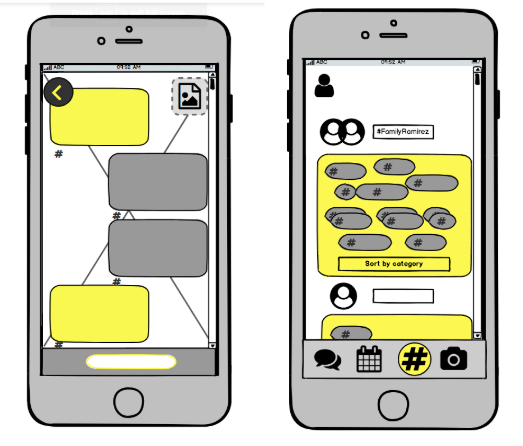
I eventually created a clickable prototype of my [email protected]! app idea: a messaging system encouraging the use of hashtags to communicate and record individual and family stories.
I then got users to try that prototype and started to take notes on how to improve it. At this stage, I will need to have it tried by more users and talk to the client and the UX team to assess the potential future of the product. It is to early to evaluate the viability of the final product or predict the response of the user in regards to the fluidity of the flow.

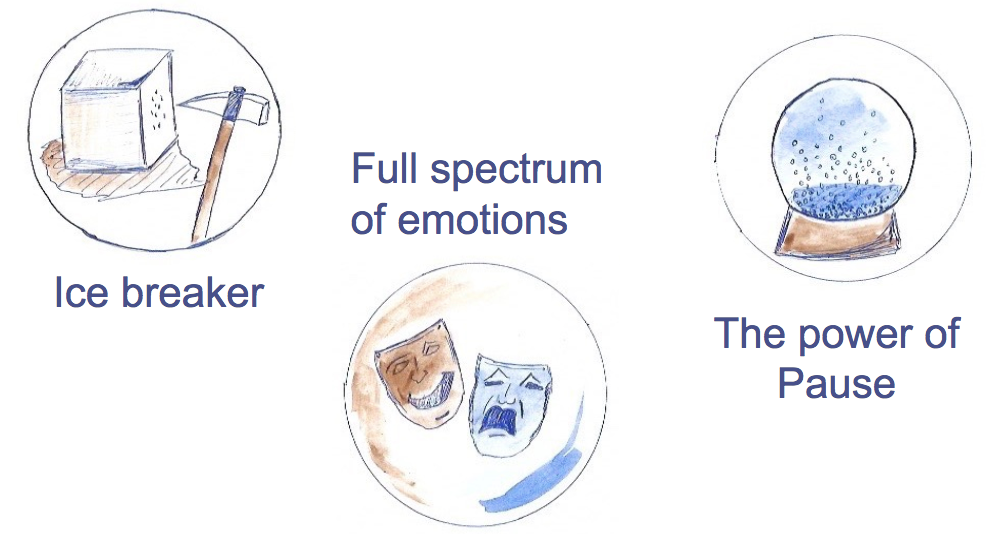
I would say that the main benefits of the tagging feature are breaking the ice and bridging the generational gap described by some users, allow the user to simply share emotional states. Crafting a short hashtag message is also a good opportunity to pause and being intentional on what the user wants to share versus communicate in the heat of the moment what was reported in the user interviews.
Incremental change to an existing product
According to feedbacks so far, I think there are opportunities for this product, particularly for generalizing the use of hashtags in messaging systems. Users could be reluctant to download a new messaging system since they already use several of them but adding a new feature in their existing tools is an option.
I also believe that improving communication and empowering parents and their teenagers to connect need to happen also out of the app by offering interventions, coaching, and tools to use technology as part of a bigger family plan. This could be facilitated by the work of Effective to Great. To support those ideas, the app I designed also prompt a splash page that asks the user snapping fingers three times as a way to go back to the present moment and be intentional in their exchanged assessing their emotional stage prior to interacting.
To conclude, I would say that the viability of this product depends on conducting more usability testing; considering further development of the scheduling system or making drastic decisions that would export the hashtag feature to the user’s favorite messaging system.
What I want to remember from that first project is as simple as the importance of feedbacks and testing to refine ideas that make sense out there, not only in my head.
